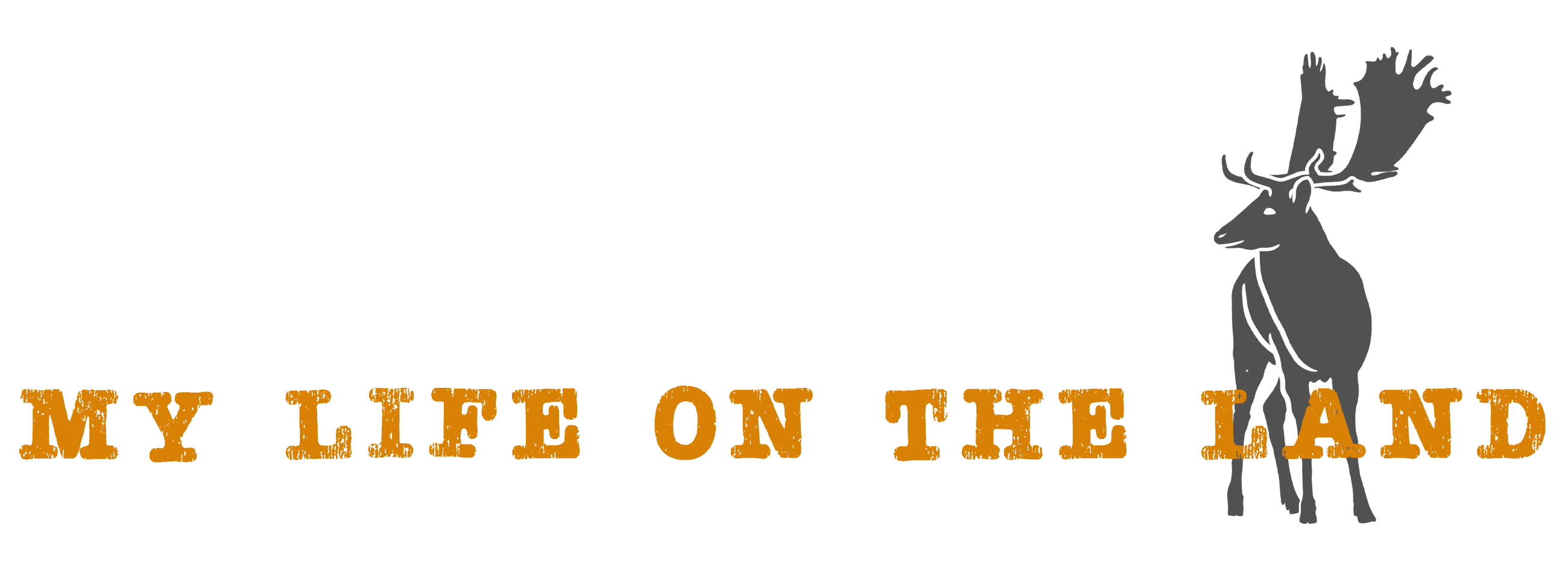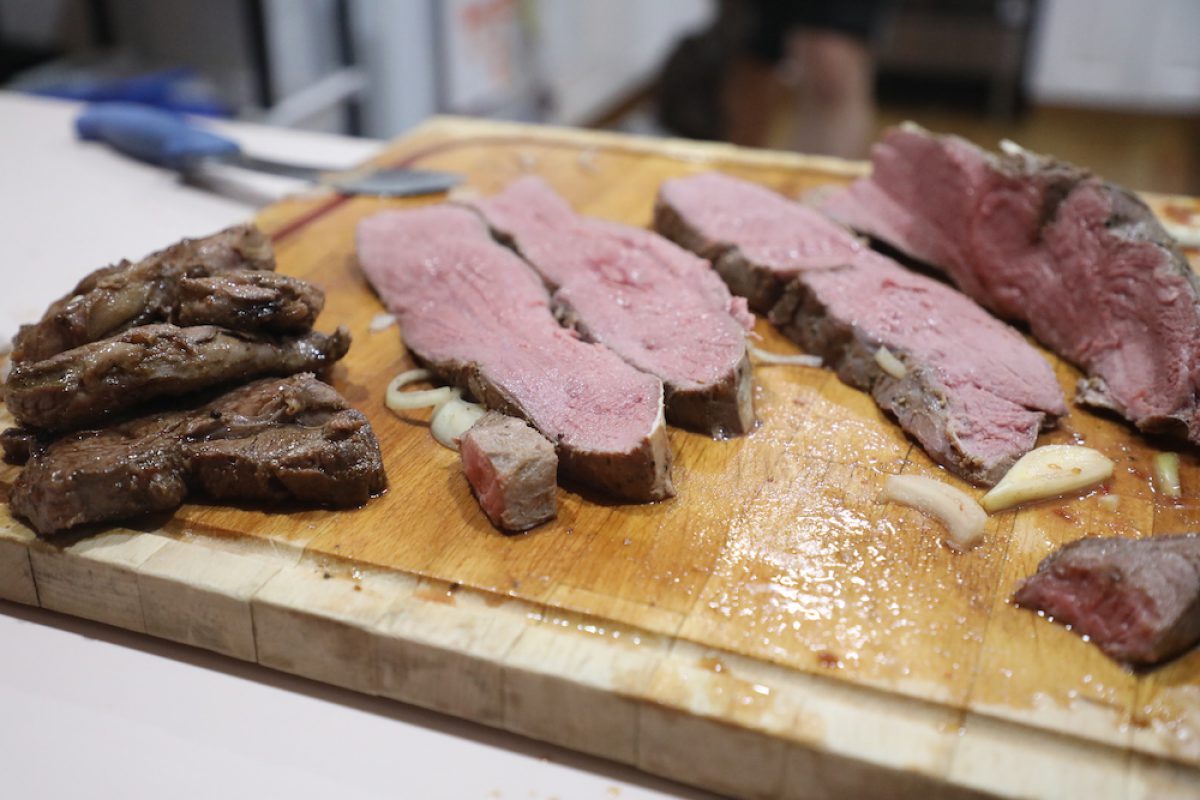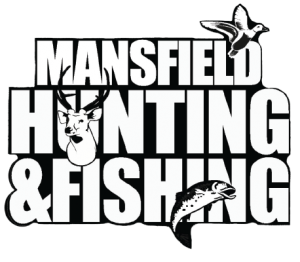Behind the Scenes
Jump to
The Hunt
In this episode, you’ll see Jess hunt a zebra in South Africa and Rod shooting sulfur-crested cockatoos on a farm in Tasmania.
Usually when we describe the hunts from our episodes, the main focus might be on what we hunted, how we hunted it, or even where the hunt took place. However, as the two species hunted in this episode might see a bit controversial, we thought it better to focus on the why.
Both the zebra and the cockatoo are iconic to their homelands. One is listed as near threatened by the IUCN, and the other is protected under Australian Commonwealth Law.
This means that hunting them can evoke some strong emotions, even amongst other hunters.
Hopefully, by the end of the episode and article, you’ll have a better understanding of why zebra are hunted for trophies, and why sulfur-crested cockatoos are culled despite their protected status.
All about the stripes
When we were first planning our trip to South Africa, and talking through the animals we wanted to hunt, the number 1 animal on Jess’s bucket list was a plains zebra.
This was a little surprising, especially since they are not really the go-to-animal that international hunters tend to choose. They don’t have the horns usually favoured in trophy hunting nor do they have the ferocious reputations of Africa’s big game species.
But Jess was enamoured with the stripes.
It’s hard to imagine Africa without those stripes as almost every postcard has at least a small herd grazing across the open plains. And despite not being its main attraction, the zebra does manage to make a significant cameo in documentaries, movies and cartoons about the continent.
A majestic, beautiful animal that bears a clue resemblance to its equine cousin, the domestic horse, the zebra evokes strong emotions amongst both hunter and non-hunter alike. Every one has an opinion on whether they should be hunted or not.
Some of the most common questions we get asked about hunting zebras include:
- Are zebras endangered?
- If they are threatened, why do people hunt them?
- Why hunt something so easy to shoot?
When it comes to conservation of wildlife species, the answers are rarely black and white.
The short answer is that there are three sub-species of African zebra and their conservation status depends on many varying factors.
While it’s important to factor in the overall conservation status of animals, it is perhaps even more important to consider their status in the country you are visiting, as the situation may differ greatly from location to location. This will also impact whether they are hunted locally or not.
At the end of the day, hunting in Africa is less about population control, as it is here in Australia, and more about conservation of the species.
It is hard for people to get their heads around the thought of hunting a species to save it, but conservation hunting has a long, long history of success around the world.
You could sum up conservation hunting as putting a value on wildlife that encourages people to protect and preserve that wildlife for the long haul.
In the US, hunting and conservation go hand-in-hand and has done since the late 1800s when (President) Theodore Roosevelt established the Boone and Crockett Club, the world’s first wildlife and habitat conservation group. In 1937, recreational hunters even lobbied the government to institute a federal tax on hunting equipment, which still exists today, and accounts for 60 percent of all wildlife funding in America.
In South Africa, conservation hunting has seen a massive 4073 percent increase in wildlife, from a low of just 575,000 in the mid 1960s to more than 24 million today.
The single biggest threat to wildlife in Africa is habitat loss. Land is cleared to build cities and towns to accommodate people, and create farms to feed the growing population, which results in wildlife being pushed further out, or worse, killed off.
Trophy hunting puts a tangible value on wildlife, and incentivises the locals to not only protect it, but to actively conserve and grow its numbers.
As for whether zebra are easy to hunt, this question is often based off the presumption that zebras behave the same as their equine cousins. But while zebra and horse may both graze grass, the zebra is not only wild, it is also a prey animal. On any given day, it may wind up as food, which means its flight or fight instinct is incredibly strong. Unlike a horse that is likely to come closer to humans, hoping for a tasty treat or a pat, zebra are far more likely to flee at the first sign of danger.
Check out this supporting post for a more in-depth look at Africa’s zebra conservation.
Culling cockies
Just as the zebra is iconic to Africa, large flocks of noisy cockatoos are synonymous with the Australian bush.
There are 21 different species of cockatoo, with almost all occurring in Australia and its surrounding islands.
Cockatoos – or cockies as they are affectionately called in Australia – can be taught to talk and do tricks, which has made them popular as pets and with zoos and aviaries around the world.
So why would anyone want to kill such a spectacular, much loved and iconic bird?
While they may be loveable characters, they have a well-deserved reputation as a particularly destructive and disruptive species!
From their loud, raucous calls to their eating habits, to the trail of destruction they leave in their wake, cockies can be both an iconic species and an ecological pest.
They will eat almost anything that grows – from newly planted agricultural seeds and young, tender shoots to ready-to-harvest grains, fruits and nuts.
A large flock is capable of completely denuding an orchard or nut plantation in just a couple of hours.
Each year, birds in Australia cause over $300 million in agricultural losses, and cockatoos are right up there as one of the main culprits.
But it’s not just farmers that feel the pain. Cockatoos also cause havoc in urban areas and in nature.
One flock of cockies caused more than $80,000 in damage to the National Broadband Network when they chewed important infrastructure. They also have a penchant for fences, power poles, outdoor furniture, sheds and even roofs and gutters. And are an unmitigated disaster for airplane engines.
Craig Murton demonstrated the ecological damage Little Corellas (the sulfur-crested cockatoos smaller cousin) are causing to old growth trees in South Australia.
Despite their undisputed status as a bit of a trouble maker, almost all cockatoo species are protected under Australian Commonwealth Law. Illegally shooting or killing a cockatoo can carry hefty fines and even prison time.
That’s because 8 of the 21 species of cockatoos are threatened, endangered, or critically endangered, though incidentally, most of those are found outside of Australia.
Government departments around Australia undertake culling programs to reduce flocks in state and national parks, as well as in urban areas and airports.
Farm like the one Rod was hunting on are able to apply for crop protection permits to manage populations if they can demonstrate the damage cockatoos are causing. They can then choose to allocate those permits to select hunters or hunting groups to help them manage the problem, which is how Rod had all the necessary permits in place to legally shoot the cockatoos in this episode.
To date, South Australia is the only state that engages recreational hunters as a whole to help manage cockatoo populations, allowing hunters to shoot both Little Corellas and galahs on private property.
Check out this supporting post for more information on cockatoos and the damage they cause.
The Location
Jess shot her zebra in the Limpopo region of South Africa.
We drove north from Johannesburg, meeting up with Willem Gertenbach from Jabula Safaris in Groblersdal. From there, it was just a short, 10 minute drive to the ‘hunting camp’.
And by hunting camp, I really mean luxury safari lodge, complete with private pool. It was definitely a far cry from the tin shacks and campsites we usually hunt in at home.
With Tash out bowhunting her nyala with Willem (you can watch this hunt in episode 5 of season 1), Jess was guided by Willem’s good mate, Neels, a veteran Professional Hunter with several decades experience hunting African wildlife.
Back home in Tasmania, Rod hunted the sulfur-crested cockatoos on a large, commercial farming property near Ross in the Central Midlands. If you’re not familiar with Australian geography, Tasmania is Australia’s most southern state. It is an island state, within an island nation and one of the first places settled by the British back in the late 1700s. For many years, it was a penal colony. It is also the unfortunate site of Australia’s worst mass shooting – the infamous Port Arthur massacre that forever changed the landscape for hunting and shooting in Australia.
These days, thankfully it’s better known for its food than its criminals. Crisp, sweet apples, creamy cheeses, cool climate wines, grass fed beef and lamb, oysters, mussels and seafood, native wallabies, and of course, wild fallow deer. Tasmania is definitely a foodie paradise that is making a name for itself on the world stage.
The Game Animals
In this episode, you would have seen Jess hunt a plains zebra, while Rod hunted sulfur-crested cockatoos as part of a crop protection hunt.
Plains Zebra (Equus quagga)
The most populous of the three sub-species of zebra in Africa, the plains zebra prefer to populate grassland, scrubland and savannas across Southern Africa. They are found as far north as Ethiopia and South Sudan. Other countries they are found include Angola, Botswana, The Congo, Kenya, Malawi, Mozambique, Namibia, Rwanda, Zimbabwe, Zambia, Uganda, Tanzania, and of course, South Africa where healthy herds exist on many of the 10,000 privately owned game ranches.
They are a migratory animal that has a general lifespan of around 10 years in the wild. They live in large herds led by a dominant stallion, with mares and younger offspring making up the remaining herd. Usually it is the much bigger stallion favoured by trophy hunters, but Jess chose a much smaller female because she liked the intricate patterns in its stripes.
Did you know that each zebra has a completely unique stripe pattern, much like a human finger print?
Like their equine cousin, the horse, they are a single-hoofed animal. Plains zebra range between 1.1 to 1.5m (3.6 to 4.8 feet) at the shoulder, and weigh up to 350kgs (770lbs).
Zebra are hunted both for their boldly patterned coats, as well as their meat, which is sold in butchers, supermarkets and restaurants around Africa.
The IUCN lists them as a near threatened species, which means hunting is more about conservation and giving them a value than in population control or pest management.
Sulfur-crested cockatoo (cacatua galerita)
Known colloquially as the cocky in Australia, the sulfur-crested cockatoo is one of 21 species of cockatoos prevalent across Australia and Oceania.
They are a predominantly white, large-bodied bird with a distinctive yellow crest of feathers on the top of its head. Not to be confused with their critically endangered cousin, the yellow-crested cockatoo, the sulfur-crested cockatoo is listed as a species of least concern by the IUCN, with an unquantifiable population in the wild.
They range in size from 44cm – 55cm (17.5 – 21.5in) and their raucous screeching calls can be heard from quite a distance away.
Cockies are highly intelligent creatures that can be taught to talk (most Australians can remember a friend or family members cocky that learned to swear like a trooper), do tricks and fetch on command. In captivity, they can live up to 70 years, though their lifespan is more likely to be 20 – 40 years in the wild.
There’s some disparity in how cockatoos are viewed in Australia. They are a protected species under Commonwealth Law, which means destroying one without the correct permits or permissions can carry hefty fines (some upwards of $200,000) or even prison terms. Yet, they are also well-known agricultural and environmental pests, and contribute to more than $300 million in agricultural damages each year.
Like much of Australia’s native wildlife, even the public seems to have a conflicting view of them – simultaneously loving them while acknowledging the damage they cause to homes and property.
Click on the photo below for a closer look at the Sulfur-Crested Cockatoo and the problem cockatoos in general are causing in Australia.
NAME
Plains Zebra
SCIENTIFIC NAME
Equus quagga
RECOMMENDED FIREPOWER
Firearm - .270 or larger / Bow - min. draw weight 50lbs
CONSERVATION STATUS
Near Threatened
WHERE TO HUNT
Botswana, Namibia, South Africa and Zimbabwe
NAME
Sulphur crested Cockatoo
SCIENTIFIC NAME
Cacatua galerita
RECOMMENDED FIREPOWER
Firearm - .22 or larger, or can use a 12 gauge
Conservation status
Least Concern
WHERE TO HUNT
Specific Permits needed to hunt
Game Saver Tips
Let’s face it – neither zebra nor cockatoo would be considered a staple meat for most Westerners. In fact, it’s probably likely many of you will either never get the chance to try either, or would choose not to even if it was offered up to you.
But the vast majority of animals are actually edible. It is only personal tastes and cultural norms that stop people trying exotic meats.
We had the opportunity to try zebra meat on our first visit to Africa back in 2009 at a popular restaurant in Johannesburg aptly named Carnivore. I’m not going to lie, I had a hard time getting my head around the idea of eating zebra as I grew up riding horses. Still, I tried it, and was pleasantly surprised. It’s not unlike beef or venison in texture and colour, though perhaps slightly sweeter than both.
Since then, we have also had the opportunity to try zebra biltong (a South African dried meat, similar to jerky) and the second time we went to Carnivore, I was a lot more eager to ask for more of the zebra on my plate.
In much the same way, we were eager to try the cockatoo breasts Rod harvested off his cockatoo. Unfortunately, for all his careful butchering in the video, we failed to vacuum seal the meat and it ended up getting severely freezer burnt before we had the opportunity to cook it up, but will certainly do so the next time we are asked to cull some cockies.
Cockatoo was one of the many native animals eaten by Indigenous Australians for thousands of years, so we know that it definitely edible.
They are a darker meat bird, similar in colour to a wild duck, which means they would benefit more from not being overcooked. After all, a medium rare cocky is much better than a well-done cockatoo.
Gear List
We love to share the gear with you guys so if you see something you like that we use you can grab for yourself , unfortunately some of the gear we use is no longer available or they are older models. We will try to give you alternative gear if its an older model but some things in this episode like the Save a Fawn beanie or Jess’s Under Armour gear are no longer available at all!
Clothing
Equipment
Our favourite equipment to take with us everywhere from guns and packs, to binos and rangefinders.
Watch the full episode (members-only)
Where can I watch this episode?
Watch on I Am Hunter
Watch on MyOutdoorTV
Episode Sponsors
What is I Am Hunter?
I Am Hunter wants to change the way hunting is perceived and to change the conversation from a negative one driven by anti-hunters to a positive one led by hunters.
Our goal is to help hunters become positive role models and ambassadors for hunting, while simultaneously helping non-hunters understand why hunting is important.
You can become a supporter and help us achieve our goal and spread a positive message about hunting with the wider community.
Related content
Our other channels
Get our newsletter
Get our free monthly newsletter direct to your inbox
Listen on iTunes
Listen to our podcast on iTunes.
TV series
Watch I Am Hunter episodes on My Outdoor TV (MOTV)
































